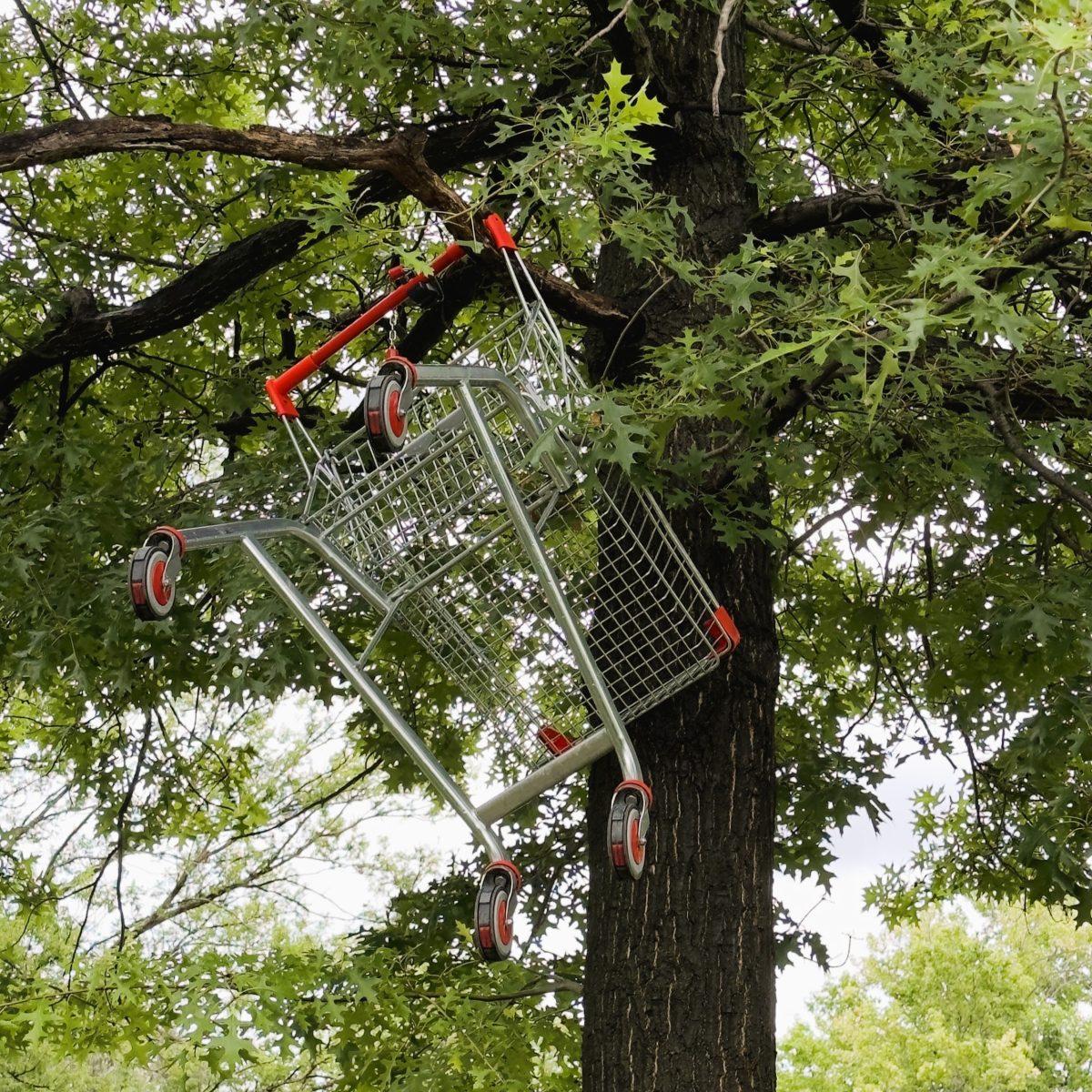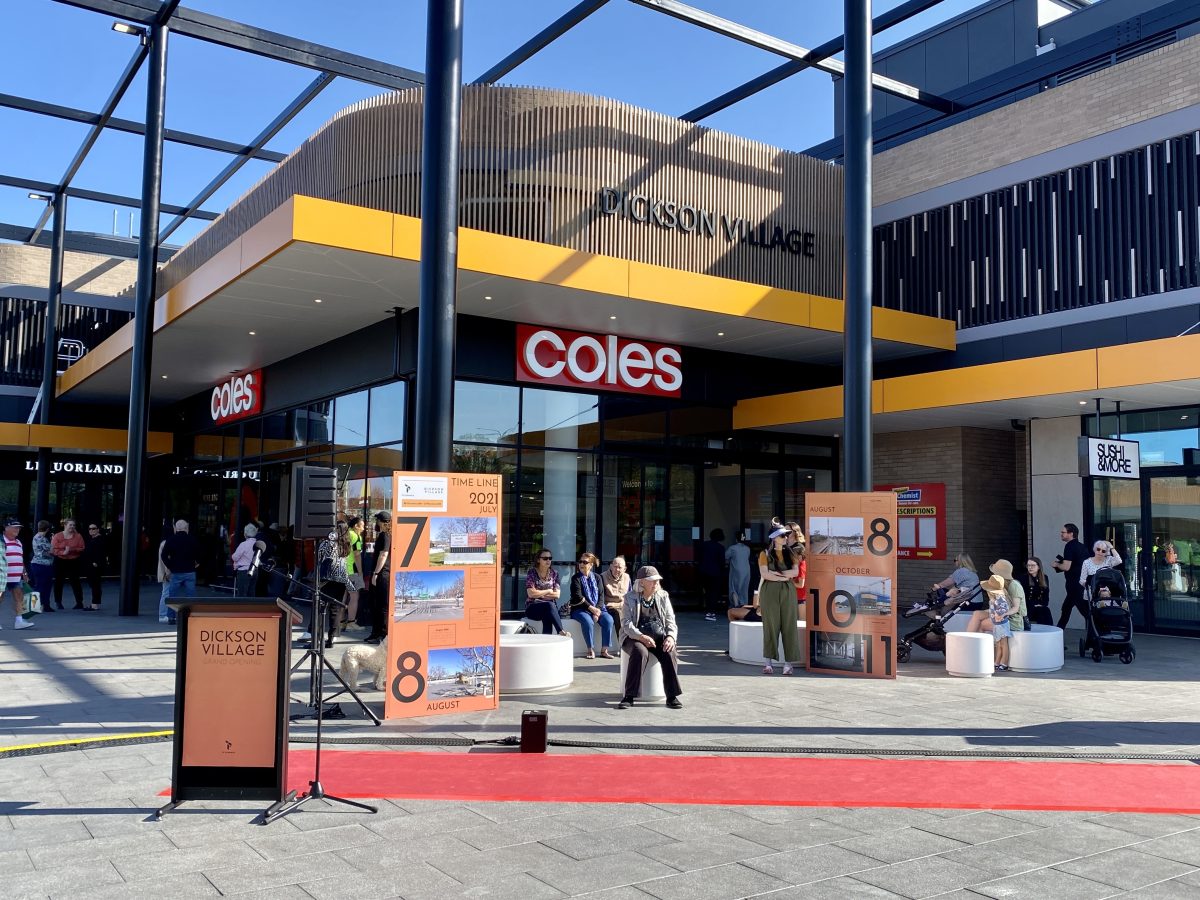
You can’t park there, mate! Photo: Michelle Kroll.
Is there an award we didn’t know about for whoever can get a shopping trolley into the most out-there place?
Every month, Transport Canberra and City Services (TCCS) crews fish about 30 shopping trolleys out of the ACT’s lakes, ponds and waterways.
And that’s not counting the ones found up trees, on top of signposts, in fountains, and on top of the yellow reed artwork outside the front of the Belconnen Arts Centre.
The ACT Government is embarking on a ‘trolley blitz’ across the Tuggeranong, Woden, Weston Creek and Molonglo regions, hunting for “non-compliant shopping trolleys and trolleys located outside shopping precincts”.
Gearing up to take part is Sam Neylon, a Lakes Officer within TCCS.
“My team undertake regular inspections and cleaning around all the ponds and waterways in the ACT, and regularly attend to shopping trolleys and things like that put in the waterways,” he says.
“When you start to clear an area, you’ll find them, and occasionally a random one in a drainage or a hard-to-access area.”
So, is it as bad as people say? Is the bottom of Lake Tuggeranong just a carpet of rusted shopping trolleys?
It’s definitely a “hotspot”.
“Last month, we pulled out about 30 across a couple of hotspots, including Lake Tuggeranong and Lake Ginninderra. Generally, wherever you get higher foot traffic around shopping precincts and car parks.”

This artwork is a shopping trolley hotspot. Photo: Belconnen Arts Centre.
He says others are “quite inventive”.
“It’s a lot easier just pulling a trolley from a road or a park compared to some of these other locations,” he says.
“It blows my mind – whether it’s alcohol-fuelled, or peer pressure, or just the thrill of doing it – I couldn’t tell you the psychology behind it. I mean, I’m sure we’ve all ridden in trolleys before, but to actually go and throw them into a waterway – it’s destructive behaviour like any sort of vandalism, whether graffiti or smashing bottles.”
Many trolleys have been reported through the government’s Fix My Street portal or found by rangers on patrols. People can also enter into a draw to win a $1000 cash prize when they report them through the Trolley Tracker site.
Contractors hired by the supermarkets will normally collect them within 24 hours, after which TCCS slaps on a $123 fee for added incentive.
However, for those Sam most often deals with, the contractors don’t have access.
“With a hook and chain, we can generally pull them out of the water or winch them out using a vehicle as support.”
These ones are brought to the TCCS depot, where the rangers pick the good from the bad and ask the supermarkets to come and collect the good, while the bad are recycled as scrap metal and the money donated to charities.
Trolleys left on pathways are a hazard to cyclists and pedestrians, while those in waterways can not only become traps for turtles or yabbies but also clog up the drains and potentially cause localised flooding during storm events.
And there are fines attached. Shoppers can face an on-the-spot fine of $60 if they ignore a city ranger’s direction to return a trolley.

Trolleys from Dickson Coles employ geofencing technology to prevent them from going missing. Photo: James Coleman.
Sam says the coin-lock system, which was mandated in 2011, has lowered the number of trolleys going walkabout, but geofencing technology like that employed on the trolleys at Dickson Coles is far more effective. This locks the wheels when the trolley deviates too far from the supermarket.
“We’ve seen it be effective in northern Australia in places like Cairns and Ipswich, but it’s not required by legislation in the ACT yet, so it’s up to the retailers to choose to use it to avoid their trolleys being removed and all that entails,” he says.
“It’s definitely something to be looking at.”
What’s the weirdest place you’ve seen a shopping trolley?
Original Article published by James Coleman on Riotact.



